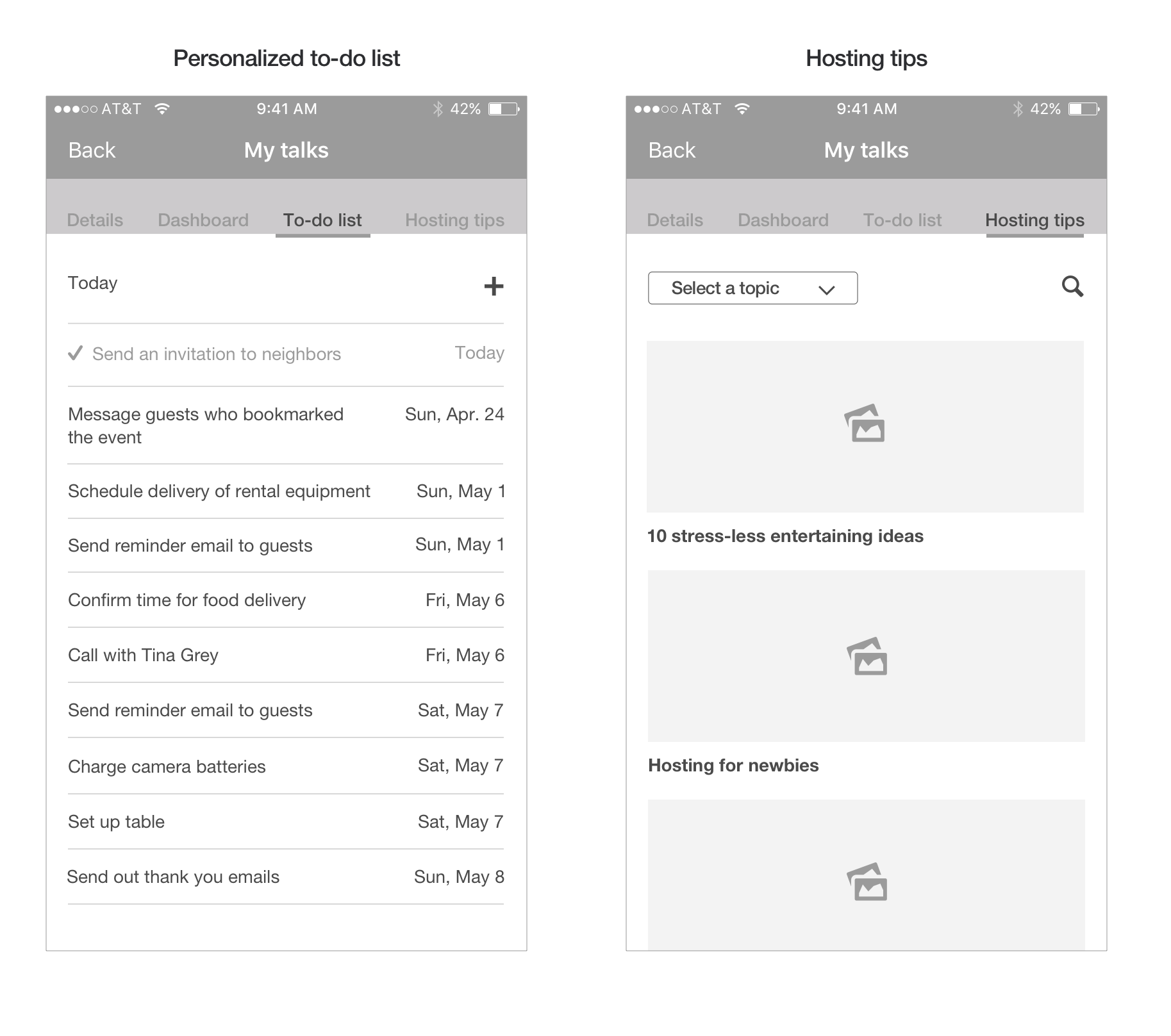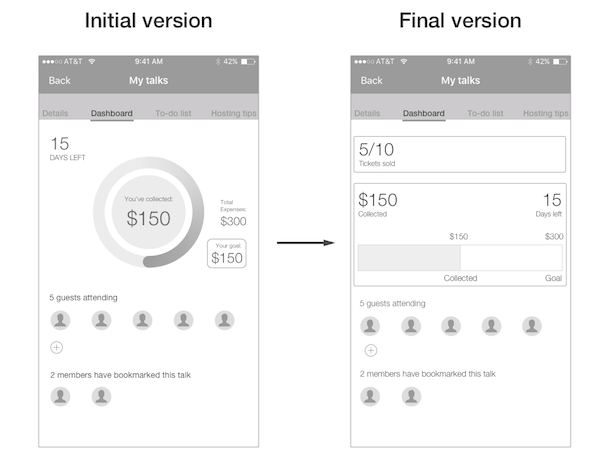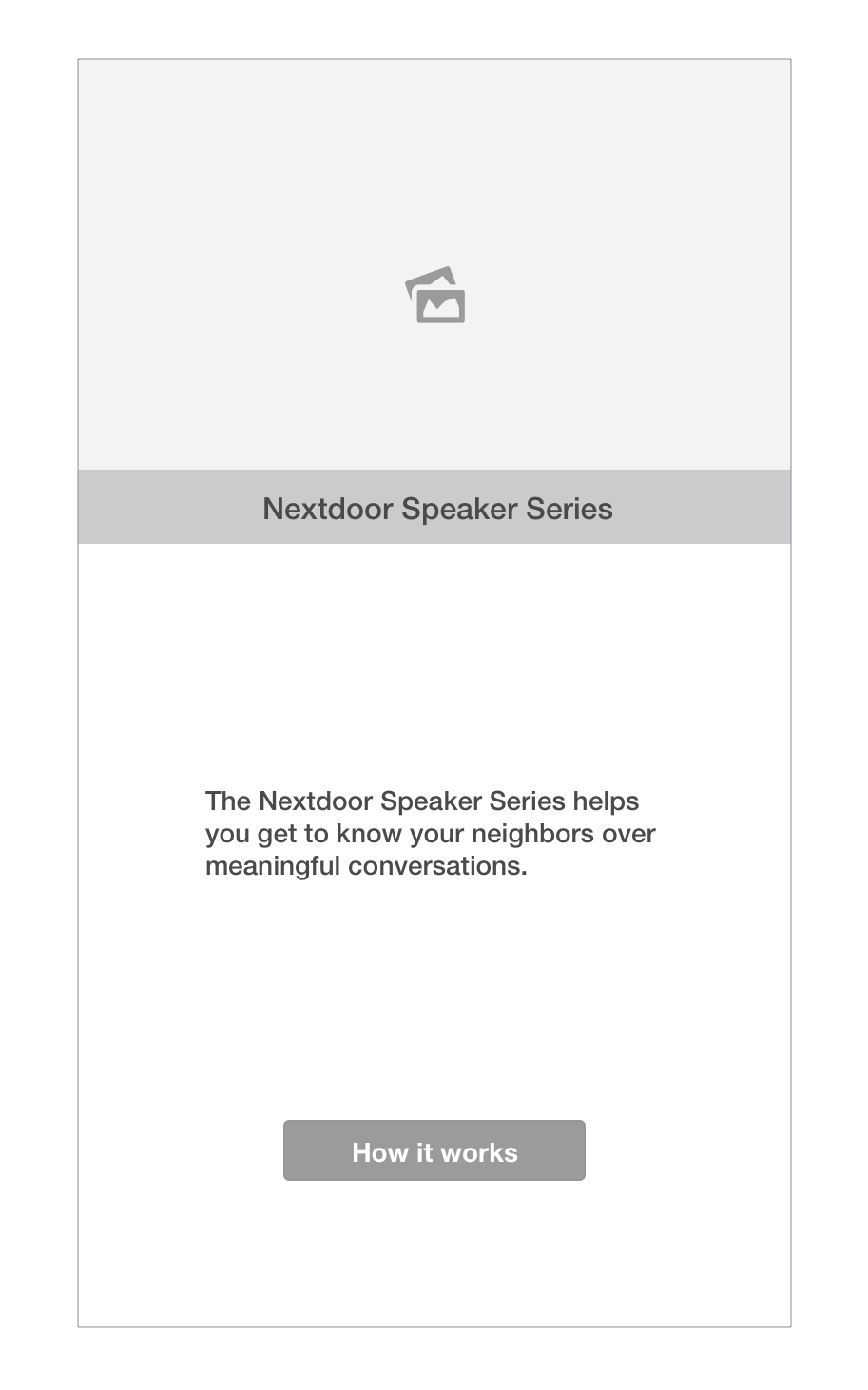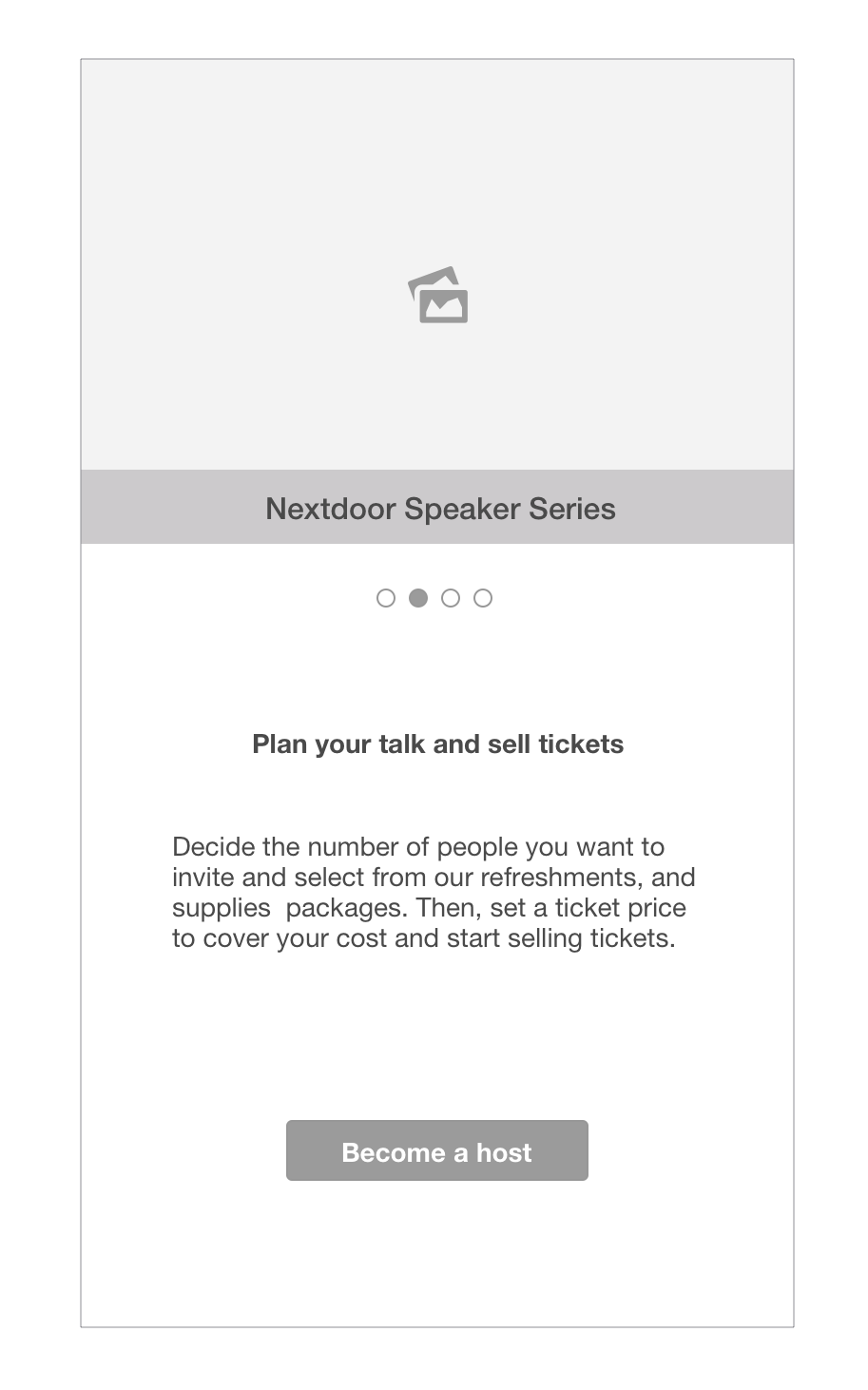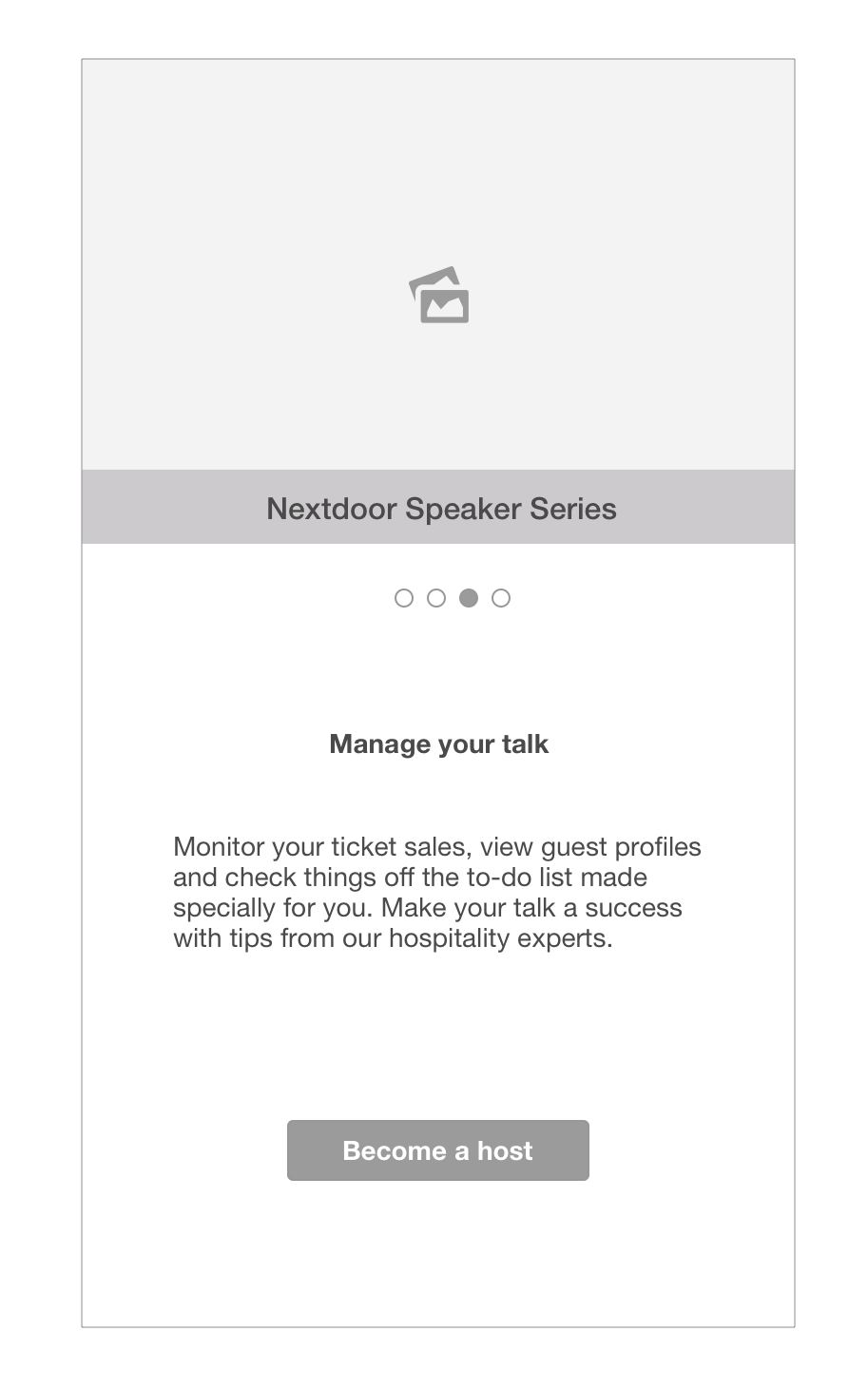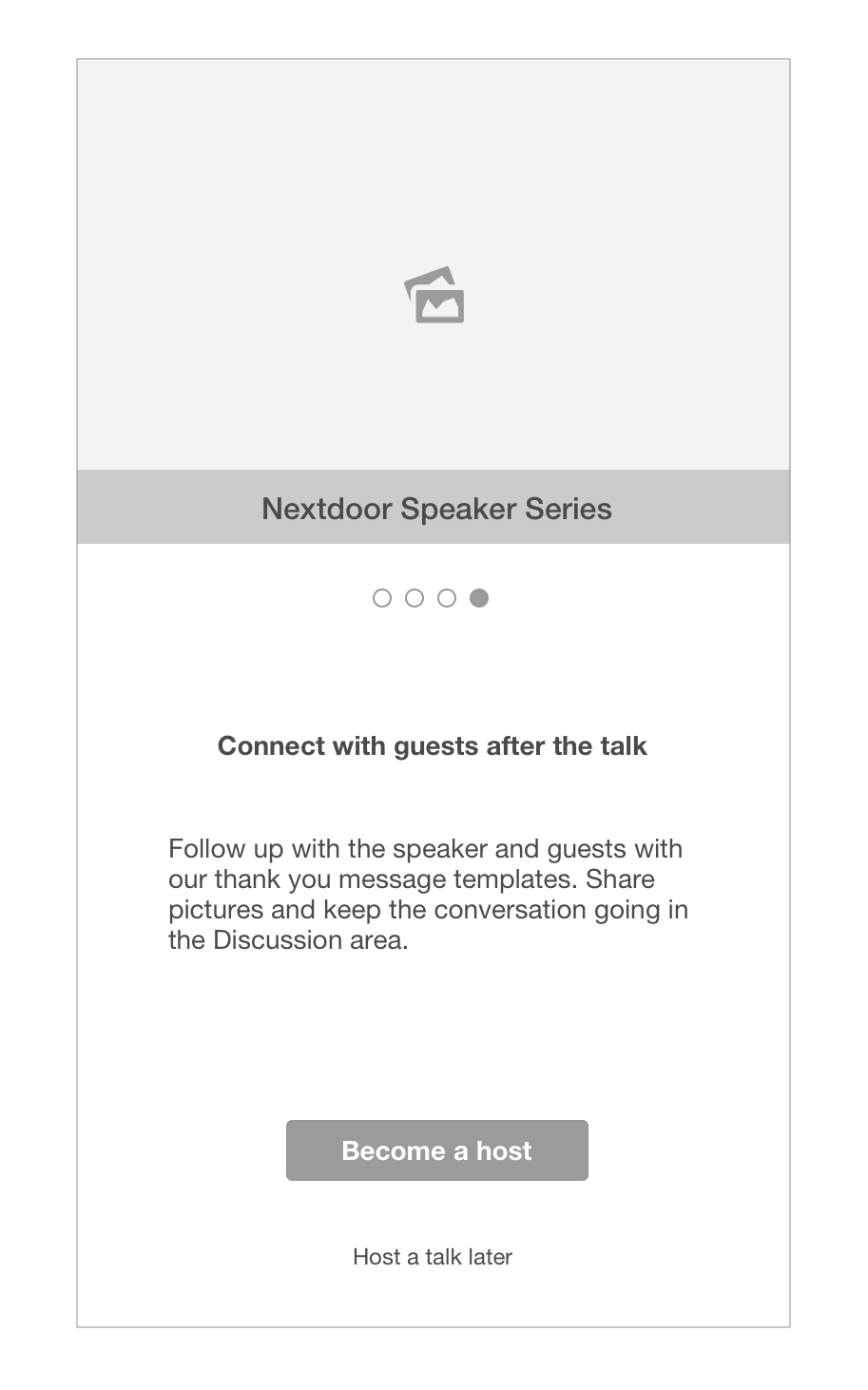Designing an events feature to increase community engagement
Nextdoor
project details
Timeline: 2 weeks
Team: 2 people
My role: As part of a close-knit, two-person team, we worked together on every aspect of the UX design process. I took the lead on competitive analysis, user flows and wireframes.
Tools: Paper and pencil, Sketch, Marvel
Challenge
Building community by hosting talks
Nextdoor is introducing a new initiative called the Nextdoor Speaker Series which allows motivated community members to host talks by Nextdoor speakers (local authors, artists, musicians etc.) Our assignment was to build a solution that helps members find a speaker and host talks in their homes. Hosts would be responsible for the speaker fee and would offset the cost of hosting by selling tickets to their neighbors.
Solution
A platform that connects community members with similar interests and assists with logistics and hospitality
We designed a platform within the current Nextdoor app that helps users create a talk based on their interests. By offering refreshment packages and ticket price calculation based on the number of guests as well as a pre-made to-do list, users can easily manage event logistics. Also, the platform includes hospitality tips for users who may not have hosting experience.
Process
Understanding the host-guest services landscape
All the services we looked at in this space assist with straight up logistics. Some, like GroupMuse and Airbib, offer added value by hand-holding the user through the event creation process and offering hospitality tips. We were unable to analyze Front Porch Forum and EveryBlock, which are direct competitors of Nextdoor because they aren't available to California residents.
"I'd like to host but...."
Of the ninety-five people we surveyed, the majority indicated that hosting a talk in their home would help grow their knowledge and enable them to meet more people. However, they are hesitant to host because managing event logistics is time-consuming and they were concerned about safety.
What makes hosting challenging?
To delve deeper into understanding the motivation, process and challenges around hosting, we interviewed people who host events on a regular basis - everyone from those who host events to socialize to those who host dinners in their homes for income.
Users need help building community and managing logistics
Conducting affinity mapping on our interview responses revealed two major themes - community and logistics.
Users want to feel a connection with their community and like meeting people with similar interests. However, they feel overwhelmed when it comes to figuring out event details and pricing and promoting and event. Although they don't mind inviting acquaintances, they like to know something about who's attending. As a host, they feel they're responsible for creating an experience during the event. Following up afterwards is key to maintaining relationships.
Therefore, we came to the conclusion that our solution would need to connect users with similar passions and would need to simplify the process of hosting.
Who are our users?
We developed two personas based on our target audiences - one for a seasoned host and one for a newbie. Understanding their goals and pain points enabled us to design features that cater to both types of users.
How we address users' needs
We developed the following features to make hosting easy:
- Search speakers by topic - to create a talk based on a specific interest
- Pre-made agenda - to help structure the event and create a better talk experience
- Customized food, beverage and equipment packages - to minimize time spent calculating food quantities and researching vendors.
- Pre-calculated ticket price - to help set a ticket price based on the number of people attending and cost of packages selected
- Sales dashboard - to monitor ticket sales, days left until the talk and number of attendees
- Pre-made to-do list - to eliminate the need to figure out what needs to get done and when
- Hosting tips - to help users learn about how to host a successful event
Integrating the Speaker Series into the existing structure
Our research showed that most users access Nextdoor via the mobile app, so we decided to design for that platform. We considered designing a native app but concluded it would burden the user to access two separate apps and may discourage use. Incorporating the Speaker Series in the existing app would make it easier for users to discover and participate.
We placed the Speaker Series under the "More" menu where other major sections of the app are located. Within the Speaker Series, we enabled users to view upcoming talks (Talk Schedule), create a talk (Host a talk), manage their talks (My talks) and learn about how the Speaker Series works. Once talks are created, they would appear in the Activity feed.
Designing an efficient flow
In mapping the user flows, we incorporated the features identified through research. While designing the wireframes, we took inspiration from several apps to identify the best presentation of navigation patterns, product and checkout pages.
"Host a talk" wireframes
Below are select screens that demonstrate the key features of the Speaker Series.
Iterating for clarity
Removing an unwanted feature - Since users indicated safety was a concern, we initially designed a feature that would allow hosts to accept or deny guests. However, Nextdoor users mentioned they felt a level of trust with members because they could see a member's profile and accepting/denying guests seemed unneighborly. So, we removed the "accept/deny" feature.
Improving the dashboard design - Users found the initial version of the dashboard design confusing. They wanted to be able to quickly identify how many remaining tickets needed to be sold and how far away they were from their goal. In the redesign, we added that information to the page and went with a progress bar chart to make it easy to understand.
Dashboard design iterations
Creating onboarding screens to introduce the concept - In our first iteration, we didn't include the onboarding screens and had users go directly into talk creation, which felt overwhelming to them. Users mentioned they didn't completely understand how the Speaker Series worked, although they found it interesting. So, we created the "About the Speaker Series" section.
Onboarding screens
Next steps
Our next step would be to develop a similar platform for desktop. We would also build out the guest side of the solution by conducting user interviews and testing the prototype we build.
AlzCare Labs / Nextdoor / Free the Need / Concord Coalition












